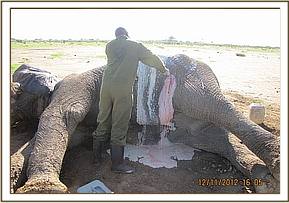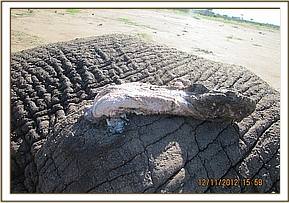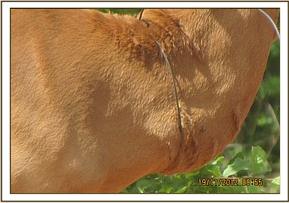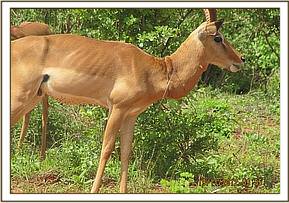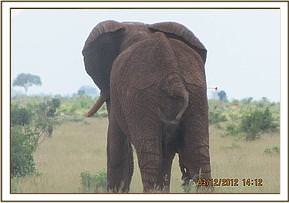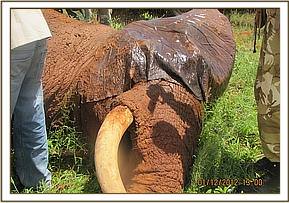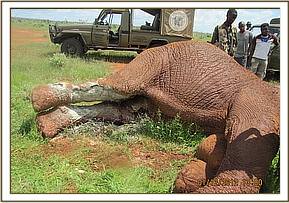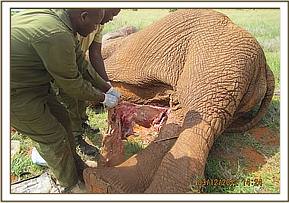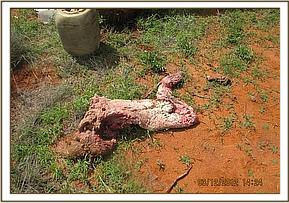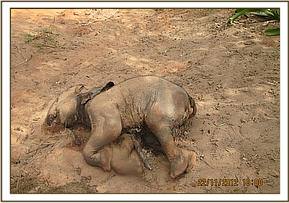Introduction Despite good amount of rains witnessed across the Tsavo region, cases of wildlife injuries continued to dominate veterinary interventions undertaken in the conservation area
Introduction Despite good amount of rains witnessed across the Tsavo region, cases of wildlife injuries continued to dominate veterinary interventions undertaken in the conservation area. Apart from clinicals, rescue of buffaloes and herpes disease surveillance in Elephants were also undertaken. The unit is expected to continue experiencing enhanced number of cases in coming months. Investigation of a suspected rabid lion that attacked a security guard at Tsavo Camp, Tsavo East. 1st Nov The carcass of a lion that was killed after attacking a night guard within Tsavo camp in northern Tsavo East National Park was delivered to Tsavo west Park offices but due to lack of refrigeration facilities it underwent decomposition and was not viable for any testing. Due to worries of rabies an investigation was carried out to determine if the lion could have been infected with rabies. After investigation that involved interviews and inspection with the camp staff, medical facilities in the area, owners of surrounding properties several conclusions were arrived at:- The lion killed had the previous day been spotted being bitten by a crocodile about 300 metres from the camp along the Galana river, after which one of the pride female came to her rescue. The leg bitten corresponds to the alleged lameness witnessed in the young lioness during the attack. The young lioness was confused after being left behind by the pride. There were no cases of domestic dog rabies reported by the local health and vet facilities at the time, wildlife rabies occurs through spill-over effect after the known maintenance host (domestic dog) get infected (current literature). There were no signs of rabies observed in wild dogs spotted in the precincts of the hotel. Conclusion With the above information it was concluded that there is no prevailing rabies outbreak in wildlife populations in the park or the adjacent community areas but as a precautionary measure the injured guard was adviced to be given post exposure rabies vaccination. Rescue of buffaloes stuck in a muddy dam in Taita salt lick sanctuary, 2nd Nov. After the biting drought caused by the failure of the April-June long rains, many watering points including a dam in Taita hills wildlife sanctuary finally gave in leaving a muddy mass that made a graveyard of many buffaloes trying to quench their thirst. The team was called in to save several young buffaloes that had survived the traumatic experience. About seven buffaloes were pulled to safety and allowed to rejoin the herd.
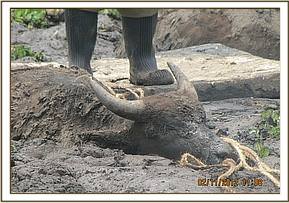
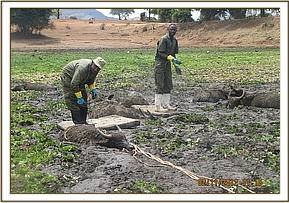




Examination and management of a snared lion from Lamu region, 6th Nov. The lioness was brought to Tsavo research centre with a severe snare wound that cut through to the bones on the left foreleg. The lioness was trapped after preying on small stock occasioned by the severe leg injury. With very poor body condition and the severe injury, the lioness was found unable to survive in the wild and euthanasia was administered. Autopsy also revealed massive internal parasitaemia. The lioness must have survived the initial snaring but with the tight wire around the wrist, hunting was made impossible hence loss in body condition.
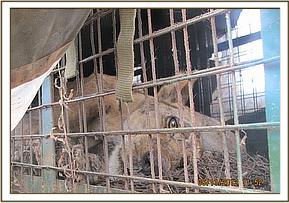
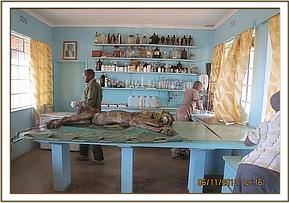
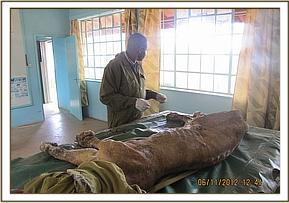

Immobilization and treatment of an injured Elephant in Sala gate area of Tsavo East, 7th Nov. The elephant reportedly fell into a water dam after sustaining a leg injury suspected caused by an arrow shot. The young bull was found partially submerged in the muddy water with ocassional trunk raising for respiration. Darting was done using 16mgs of etorphine in a dan inject system. The wounds were washed clean using water mixed with hydrogen peroxide and doused with iodine. A final coat of green clay was used to cover the wound. Parenteral antibiotics were administered to contain any systemic infection. Prognosis is guarded
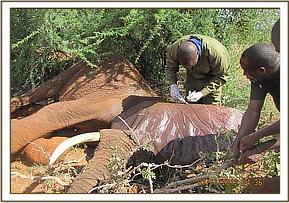
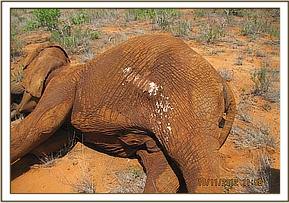
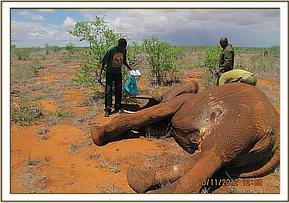

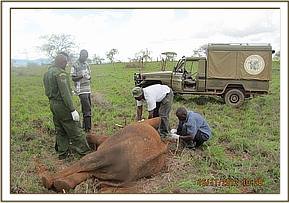
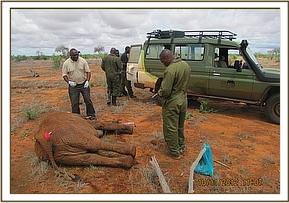

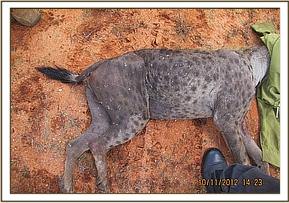

Satao camp is an important watering area for large Elephant bulls that inhabit the eastern boundary of the park. They are oftenly targeted by poachers using poisoned arrows. The huge bull was seen unusually in the same area for days without moving far. Closer observation revealed a huge wound on the side of the body. Darting was done using 18 mgs of etorphine alone. Large chanks of dead tissues were cut off and copious amounts of pus drained. Hydrogen peroxide and iodine was used to clean the wound. A final coat of green clay used to cover the injury. After anaesthetic reversal, he was unable to lift up necessitating assistance. The bull hit the Vet unit vehicle several times after being assisted to its feet but caused little damage to the vehicle.The wound is expected to heal.
